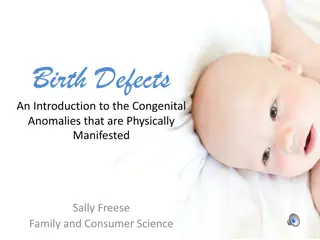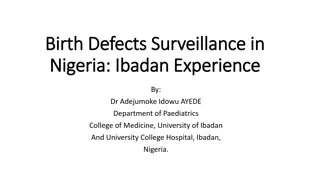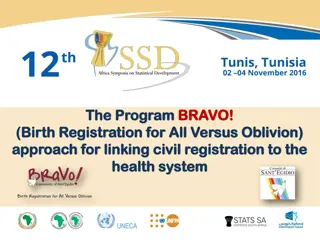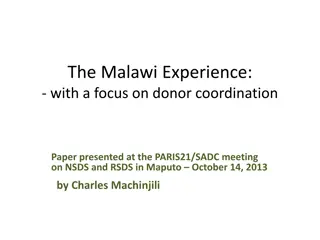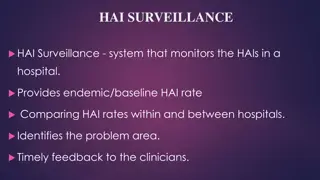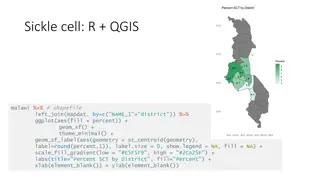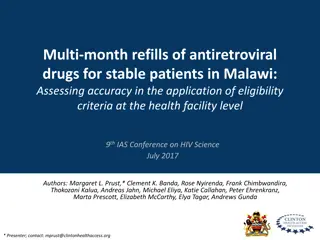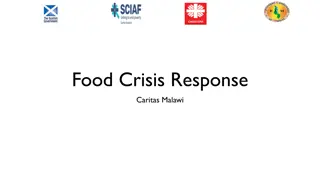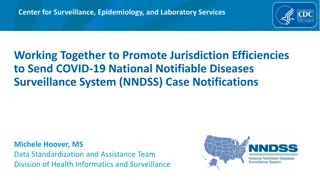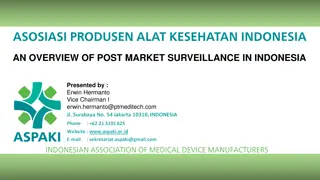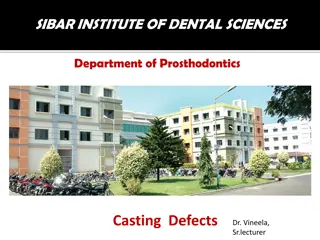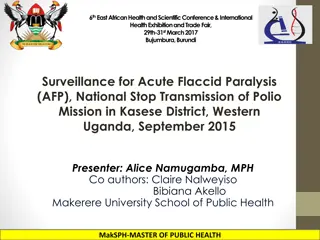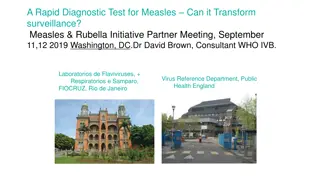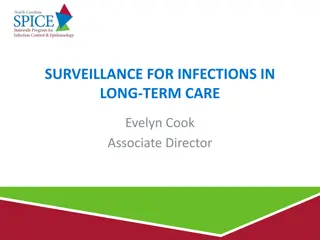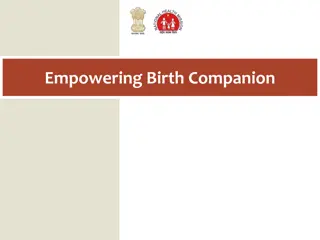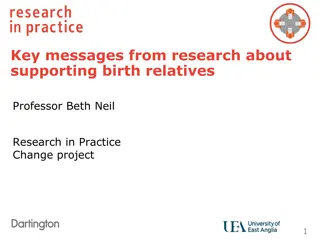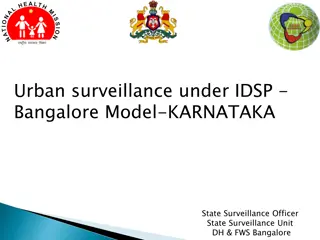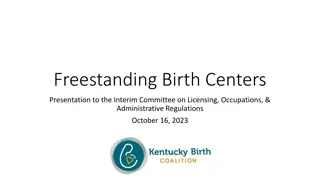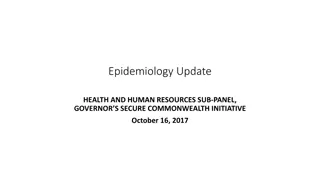Establishing a Surveillance System for Birth Defects in Malawi
This project focuses on establishing a surveillance system for major external birth defects in Malawi, with objectives including determining baseline prevalence, describing population characteristics, and comparing outcomes among HIV-positive and negative women. Implementation involves dedicated project staff, study physicians, nurses, and site managers, with the transition to I-TECH in 2020.
Download Presentation

Please find below an Image/Link to download the presentation.
The content on the website is provided AS IS for your information and personal use only. It may not be sold, licensed, or shared on other websites without obtaining consent from the author. Download presentation by click this link. If you encounter any issues during the download, it is possible that the publisher has removed the file from their server.
E N D
Presentation Transcript
ESTABLISHING A SURVEILLANCE SYSTEM: THE MALAWI EXPERIENCE DR.GEORGE BELLO HIV SURVEILLANCE TECHNICAL DIRECTOR & PRINCIPAL INVESTIGATOR FOR THE MALAWI BIRTH DEFECTS STUDY,
BACKGROUND AND SIGNIFICANCE The idea of conducting birth defects surveillance was first conceptualized by CDC after observing some defects in newborn children The defects were believed to be associated with many factors including maternal use of ART. The concept was discussed with Malawi Government during the initial meeting at the MOH Government of Malawi was agreeable to the concept and therefore embraced it.
OBJECTIVES 1. To establish a surveillance system for major external birth defects among all live and still births delivered, or registered as being born, at four hospitals in Malawi: To determine the baseline prevalence of major external birth defects among live and still births of all gestational ages; To describe the distribution of gravidity, parity, age, and HIV infection of the population of women delivering at these hospitals; To describe the distribution of birth weight, prematurity and stillbirth among the deliveries at these hospitals; To compare the prevalence of major external birth defects, prematurity and low birth weight among newborns of HIV-negative women to those of HIV-infected women on ART and HIV- infected women not on ART.
OBJECTIVES CONTD 2. To describe risk factors associated with major external birth defects among newborns. To determine if maternal use of cotrimoxazole or ARVs during very early pregnancy is associated with a higher risk of birth defects in newborns.
IMPLEMENTATION MODALITY COM implement the BDS December 2016 to Sept 2020). and hired dedicated project staff and study physicians 40 Study nurses and site managers, Research Assistants, project Coordinator, and Nursing Manager At each of the 4 sites, we have a study physician to support the BDS team and confirm birth defects BDS implementation transitioned to I-TECH from 1stOctober 2020 Hired on 24 study nurses plus BDS management team Trained 28 MoH nurses to support BDS implementation
BDS PROCEDURES Implemented in 4 high volume deliveries: QECH, Bwaila, Mangochi and Ntcheu The BDS system involves obtaining demographic and basic medical information for all births The information obtained is routinely collected by the hospitals through labor and delivery registry records, health passports or clinic records All infants are examined for external birth defects by trained midwives. A woman who delivers a baby with a major external birth defect is asked if photographs can be taken of their child to help with the diagnosis of the birth defect. Written informed consent obtained before photographs are taken.
PROCEDURES CONTD Three controls are selected for each case and are matched based on hospital of delivery. The control newborns are selected as soon as possible after a case newborn with a birth defect is identified. All participants who agree to participate in the case-control study provide written informed consent Data collection is done using tablets and uploaded to central server All birth defects are diagnosed by local physicians and confirmed by physicians at ICBDSR
INCLUSION & EXCLUSION CRITERIA Inclusions All informative births (live and stillborn) regardless of gestational age born at the four hospitals Exclusions Infants born out or non-participating hospitals Macerated stillbirths Infants with birth defects diagnosed after discharge from the hospital
DEFECTS OF INTEREST Neural tube defects: Anencephaly, Craniorachischisis, Iniencephaly, Encephalocele, Spina bifida Congenital malformations of eyes Anophthalmia, Microphthalmia Congenital malformations of ear Anotia/Microtia Oral facial clefts Cleft palate alone, Cleft lip alone, Cleft lip with cleft palate
DEFECTS OF INTEREST CONTD Congenital absence, atresia and stenosis of large intestine Imperforate anus Congenital Malformations of Genital Organs Hypospadias Malformations of the musculoskeletal system including Talipes equinovarus/clubfoot, Limb reduction deficiencies, Malformations of abdominal wall Exomphalos/Omphalocele, Gastroschisis
CHALLENGES/LESSONS LEARNT Storage of source documents not able to trace when needing to verify the data in the database hence adopted electronic form as source document Source documents not having critical information filled and inconsistencies with BDS measurements: oriented and trained MoH nurses Missing of births and babies with defects at the start and resolved with time by revising SOPs to address the challenges Working with MoH nurses to support BDS activities very challenging due to MoH staff shortages



